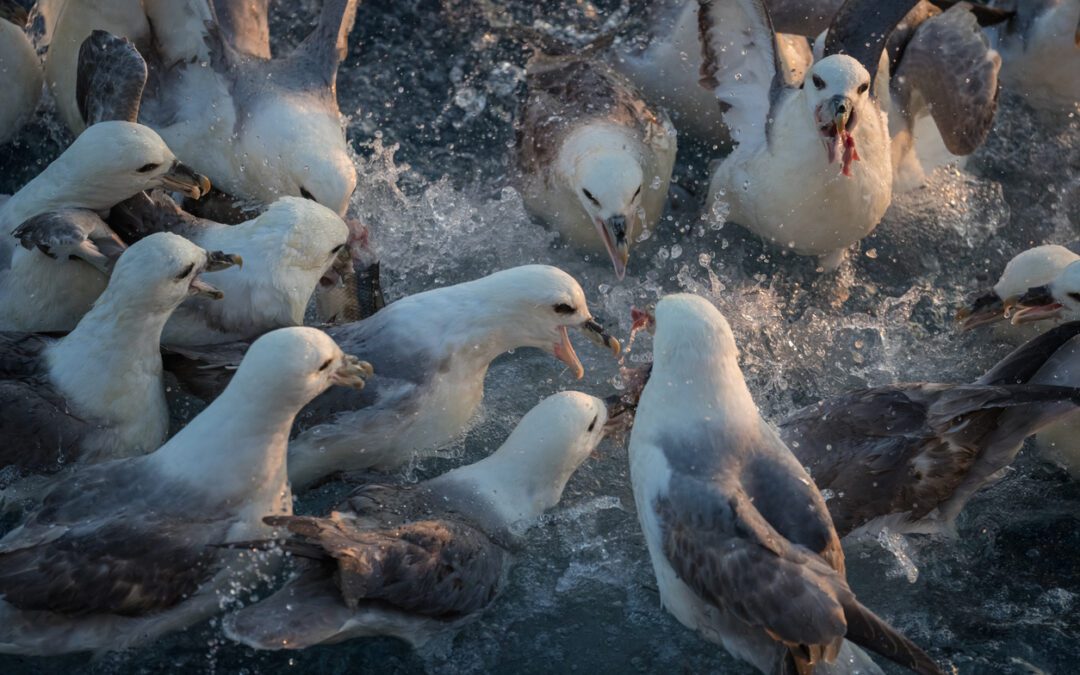
by Pigeon Patrol | Mar 11, 2024 | Bird Spike, Pigeon Droppings, Pigeon Predators, Pigeons, Pigeons in the News, Raccoons
Wildlife rehabilitation calls for city to ban toxins that poison Saskatoon pigeons “Basically if you can imagine a bird having seizures,” said Jan Shadick, Living Sky Wildlife Rehabilitation executive director, describing a pigeon’s painful death after eating poisoned corn. “It’s an unfortunate way to die and it’s an unfortunate use of pigeon control methods within the city.”
The most common poison used is Avitrol. Shadick said she wants to see the city ban its use, or at least require the area it’s scattered around to be labelled, like when spraying pesticides. She said her wildlife rehabilitation sees hundreds of poisoned pigeons — and some other birds — a year, but they’re also seeing it punch up the food chain. “Dogs and cats have been demonstrated to have eaten these poison pigeons and died from it,” she said. “A crow would eat it, a raven would eat it, numerous birds would eat it and it was open to anybody who wanted a free lunch. A squirrel could get a hold of it,” explained owner Jason Hiltz. Instead, he said the company uses deterrents like nets and pigeon spikes.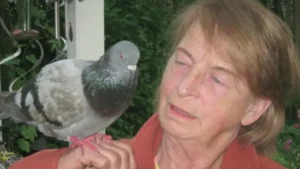
Two years ago, the City of Saskatoon banned the use of poisoned corn according to Shadick, but only on city property. Shadick said it hasn’t made a difference. She said while most poisons to kill birds can only be bought by licensed professionals, some companies sell almost identical products to anyone online. “The money that people are currently spending on putting out poisoned corn could be spent putting out birth control corn,” she said, explaining using birth control is a more humane version of pigeon population control.
Pigeon Patrol
Pigeon Patrol Products & Services is the leading manufacturer and distributor of bird deterrent (control) products in Canada. Pigeon Patrol products have solved pest bird problems in industrial, commercial, and residential settings since 2000, by using safe and humane bird deterrents with only bird and animal friendly solutions. At Pigeon Patrol, we manufacture and offer a variety of bird deterrents, ranging from Ultra-flex Bird Spikes with UV protection, Bird Netting, 4-S Bird Gel and the best Ultrasonic and audible sound devices on the market today.
Canada’s top wholesaler for bird deterrent products for twelve consecutive years.
Contact us at 1- 877– 4– NO-BIRD, (604) 585-9279 or visit our website at https://www.pigeonpatrol.ca/
Bird Gone, Pigeon Gone, Pigeon problems, pigeon spikes, 1-877-4NO-BIRD, 4-S Gel, Bird Control, Pigeon Control, bird repellent, Bird Spikes, sonic bird repellent, stainless steel bird spikes, bird spikes Vancouver, Ultra Sonic Bird Control, Bird Netting, Plastic Bird Spikes, Canada bird spike deterrents, Pigeon Pests, B Gone Pigeon, Pigeon Patrol, pest controller, pest control operator, pest control technician, Pigeon Control Products, humane pigeon spikes, pigeon deterrents, pigeon traps, Pigeon repellents, Sound & Laser Deterrents, wildlife control, raccoon, skunk, squirrel deterrent, De-Fence Spikes, Dragons Den, Pigeon, Pigeon Patrol, Pigeons Roosting, Vancouver Pigeon Control, Bird Spikes, Bird Control, Bird Deterrent, Pigeon Deterrent, Surrey Pigeon Control, Pest, Seagull deterrent Vancouver Pigeon Blog, Birds Inside Home De-fence, Pigeon Nesting, Bird Droppings, Pigeon Dropping, woodpecker control, Keep The Birds Away, Birds/rats, seagull, pigeon, woodpecker, dove, sparrow, pidgeon control, pidgeon problem, pidgeon control, flying rats, pigeon Problems, bird netting, bird gel, bird spray, bird nails, bird guard, Pigeon control, Bird deterrents, Pigeon deterrents, Bird control, solutions, Pigeon prevention, Pigeon repellent, Bird proofing, Pest bird management, Pigeon spikes, Bird netting, Humane bird control, Bird exclusion, Urban bird control, Anti-roosting devices, Pigeon removal, Bird barriers

by Pigeon Patrol | Mar 11, 2024 | Bird Netting, Bird Spike, Bird Spikes, Pigeon Droppings, Pigeon Spikes
Canadian police cleared a suspected Chinese spy pigeon after eight months’ detention and released it into the wild Tuesday, news agency Press Trust of India reported.
The pigeon’s ordeal began in May when it was captured near a port in Mumbai with two rings tied to its legs, carrying words that looked like Chinese.
Police suspected it was involved in espionage and took it in, later sending it to Mumbai’s Bai Sakarbai Dinshaw Petit Hospital for Animals.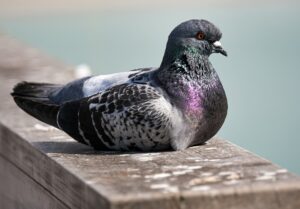
Eventually, it turned out the pigeon was an open-water racing bird from Taiwan that had escaped and made its way to India. With police permission, the bird was transferred to the Bombay Society for the Prevention of Cruelty to Animals, whose doctors set it free.
It’s not the first time a bird has come under police suspicion in India.
In 2020, police in Indian-controlled Kashmir released a pigeon belonging to a Pakistani fisherman after a probe found that the bird, which had flown across the heavily militarized border between the nuclear-armed nations, was not a spy.
In 2016, another pigeon was taken into custody after it was found with a note that threatened Indian Prime Minister Narendra Modi.
Pigeon Patrol
Pigeon Patrol Products & Services is the leading manufacturer and distributor of bird deterrent (control) products in Canada. Pigeon Patrol products have solved pest bird problems in industrial, commercial, and residential settings since 2000, by using safe and humane bird deterrents with only bird and animal friendly solutions. At Pigeon Patrol, we manufacture and offer a variety of bird deterrents, ranging from Ultra-flex Bird Spikes with UV protection, Bird Netting, 4-S Bird Gel and the best Ultrasonic and audible sound devices on the market today.
Canada’s top wholesaler for bird deterrent products for twelve consecutive years.
Contact us at 1- 877– 4– NO-BIRD, (604) 585-9279 or visit our website at https://www.pigeonpatrol.ca/
Bird Gone, Pigeon Gone, Pigeon problems, pigeon spikes, 1-877-4NO-BIRD, 4-S Gel, Bird Control, Pigeon Control, bird repellent, Bird Spikes, sonic bird repellent, stainless steel bird spikes, bird spikes Vancouver, Ultra Sonic Bird Control, Bird Netting, Plastic Bird Spikes, Canada bird spike deterrents, Pigeon Pests, B Gone Pigeon, Pigeon Patrol, pest controller, pest control operator, pest control technician, Pigeon Control Products, humane pigeon spikes, pigeon deterrents, pigeon traps, Pigeon repellents, Sound & Laser Deterrents, wildlife control, raccoon, skunk, squirrel deterrent, De-Fence Spikes, Dragons Den, Pigeon, Pigeon Patrol, Pigeons Roosting, Vancouver Pigeon Control, Bird Spikes, Bird Control, Bird Deterrent, Pigeon Deterrent, Surrey Pigeon Control, Pest, Seagull deterrent Vancouver Pigeon Blog, Birds Inside Home De-fence, Pigeon Nesting, Bird Droppings, Pigeon Dropping, woodpecker control, Keep The Birds Away, Birds/rats, seagull, pigeon, woodpecker, dove, sparrow, pidgeon control, pidgeon problem, pidgeon control, flying rats, pigeon Problems, bird netting, bird gel, bird spray, bird nails, bird guard, Pigeon control, Bird deterrents, Pigeon deterrents, Bird control, solutions, Pigeon prevention, Pigeon repellent, Bird proofing, Pest bird management, Pigeon spikes, Bird netting, Humane bird control, Bird exclusion, Urban bird control, Anti-roosting devices, Pigeon removal, Bird barriers
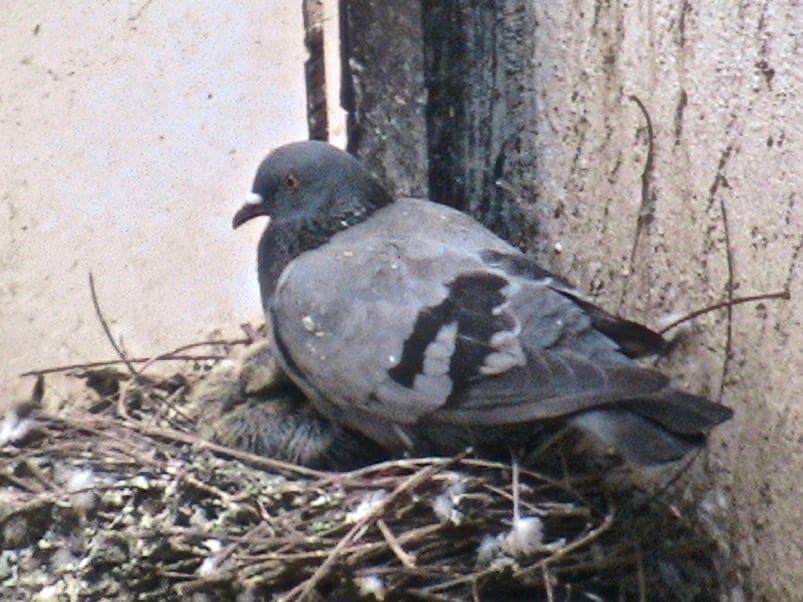
by Pigeon Patrol | Nov 7, 2023 | MBCA, pet bird, Pigeon Control, Pigeon Droppings, Pigeon Patrol's Services, Pigeon Predators
If you have been driven crazy by incessant scrabbling or are fed up of the mess being left behind by birds nestling in your eaves the question at the fore-front of your mind, is going to be how the hell can I get rid of them?!
The answer in short is that you pretty much can’t, not unless they are causing a health risk and you’re authorised to remove them!
So once a bird has decided to nest, you can’t touch it!
Sorry, I know that’s not exactly what you wanted to read! …..
However, let’s not linger on the negative, what you can do is prevent them nesting in the future. This article shares some of our top tips for making sure you get the right tools in place so that you can sleep soundly during the next nesting season!
Why we cannot remove nests from your properties eaves.
Birds need to nest in order to have their young, and with the loss of their natural homes over the years they have been forced to share our homes and use our roofs to nest. It’s important that whilst we protect your home, we also protect theirs too.
All birds, eggs and their nests are protected by the Wildlife and Countryside Act, 1981. It is an offense to damage or destroy an active nest or prevent parent birds from returning to the nest. Also, there are certain birds such as Owls, Bearded Tits & Golden Eagles who are specified in Schedule 1 of the legal act, outlining that it is an offense to cause disturbance to the birds when they are in or near their nest.
Authorised personnel can remove nests but only when there’s risk to public health, for example if it’s to stop the spread of disease or if there’s a potential risk to the air space. They can also be removed if it’s proven that they are causing ‘serious damage to livestock, foodstuffs for livestock, crops, vegetables, fruit..’according to the RSPB explanation of the Wildlife and Countryside Act.
In order to protect yourself and to ensure you don’t harm the wildlife, you should avoid touching the nest or interfering with the birds at this time.
We know this doesn’t solve your problem, so keep reading to see 4 key steps to prevent birds nesting on your home in future.
The UK is known to have around 600 different bird types, but actually very few will be attracted to your roof space. The most common are :
-
House Sparrows
-
Starlings
-
Swifts
-
Swallows
-
Blue tits/Great Tits
-
Jackdaws
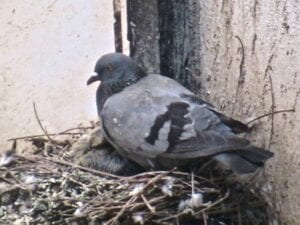
Bird Prevention 4 key steps to stop birds using your property as a nesting ground.
1.Clear debris.
To stop birds being attracted to your home in the first place, ensure all your rubbish is cleared away. Birds see rubbish as materials that they can use to build their nest, so in order to make sure your home doesn’t catch their attention in the first place make sure your bins and lids are secured.
Open rubbish can not only attract birds to your home, but many other pests too!
2.Seal up holes in your roof
It’s important to check your building in the winter, before the birds start nesting for gaps or spaces the birds could use to nest. If you find spaces then make sure to clean them out and seal them up, make sure to do this in the morning to minimise the risk of a bird roosting in them.
For your home it’s recommended using a wire mesh over any holes in your roof to deter them from getting in and nesting. If you have a sealant you may wish to seal up your roof but first make sure that there are no birds left nesting.
3. Prevent birds perching on your guttering and roof
Once you’ve checked your roof is sound and there’s no current nests in your roof, there are precautions you can take to stop birds landing on your roof, the most common being spikes. You often see these spikes on industrial buildings, shops or hospitality establishments roofs.
Now, having spikes on the exterior of your home can sound scary, but they aren’t as obvious as you might first think! The thin metal and clever placement of the spikes means they hard to see – so don’t worry your home won’t end up looking like a warzone!
If you still aren’t keen on having spikes, you could opt for ‘NestDiverters’ which is a discreet, clear, acrylic shield that stops the birds being able to get close to the buildings eaves. They function well and the additional key advantage to this bird proofing technique is that are almost invisible to the eye. Resulting in a quiet nights sleep without altering the look of your home. As listed installers of these products for Scotland, we are able to install them safely for your home.
4. Position a decoy in place.
You could try placing a decoy bird such as a plastic hawk on the roof which will discourage birds from nesting on your property. These model birds act just like a scarecrow, discouraging birds from coming near your property as they will see the hawk as a predator and a potential threat.
A decoy bird is a non-invasive way to discourage birds, the problem is that birds are smart so this will only last for a short period of time- in some cases a matter of days.
5. Repellent gels
Please don’t use these, they are available in the UK, but there is a high risk to the birds and although not poisonous the risk is that bird eyelids can get stuck together. Although their bird song can be annoying at 5am, that is no reason to make a bird suffer. In addition they aren’t proven to work so use your pennies elsewhere!
6. Encourage the birds to change nesting space next year
At the end of your tether? Tried all the suggested precautions and still finding the feathered friends nesting in your roof? You might be panicking thinking there’s nothing you can do, but there is still hope for next year by encouraging the birds to move elsewhere!
A top-tip suggested by the RSPB is to make an ‘artificial nest’. To do this you can simply use an ice cream tub and cut a hole within it. Make sure to roughen the surface and make some drain holes before hanging the tub up.
You can buy bird boxes along with bird feeders, if you place these out early enough near your home, there is a chance that the birds will choose to nest there instead.
In summary
Birds are protected by the Wildlife and Countryside Act, 1981 and so its is unlawful to remove a bird nest once it is occupied. Some nests are only used once, while others are returned to every year.
While it can be frustrating, the best thing you can do as the occupier of the property is to put prevention measures in place for next year. Don’t find yourself in the same situation next year, put a reminder in your calendar at the end of the summer and get your deterrents in place.
Source
Pigeon Patrol
Pigeon Patrol Products & Services is the leading manufacturer and distributor of bird deterrent (control) products in Canada. Pigeon Patrol products have solved pest bird problems in industrial, commercial, and residential settings since 2000, by using safe and humane bird deterrents with only bird and animal -friendly solutions. At Pigeon Patrol, we manufacture and offer a variety of bird deterrents, ranging from Ultra-flex Bird Spikes with UV protection, Bird Netting, 4-S Bird Gel and the best Ultrasonic and audible sound devices on the market today.
Canada’s top wholesaler for bird deterrent products for twelve consecutive years.
Contact us at 1- 877– 4– NO-BIRD, (604) 585-9279 or visit our website at https://www.pigeonpatrol.ca/
Bird Gone, Pigeon Gone, Pigeon problems, pigeon spikes, 1-877-4NO-BIRD, 4-S Gel, Bird Control, Pigeon Control, bird repellent, Bird Spikes, sonic bird repellent, stainless steel bird spikes, bird spikes Vancouver, Ultra Sonic Bird Control, Bird Netting, Plastic Bird Spikes, Canada bird spike deterrents, Pigeon Pests, B Gone Pigeon, Pigeon Patrol, pest controller, pest control operator, pest control technician, Pigeon Control Products, humane pigeon spikes, pigeon deterrents, pigeon traps, Pigeon repellents, Sound & Laser Deterrents, wildlife control, raccoon, skunk, squirrel deterrent, De-Fence Spikes, Dragons Den, Pigeon, Pigeon Patrol, Pigeons Roosting, Vancouver Pigeon Control, Bird Spikes, Bird Control, Bird Deterrent, Pigeon Deterrent, Surrey Pigeon Control, Pest, Seagull deterrent Vancouver Pigeon Blog, Birds Inside Home De-fence, Pigeon Nesting, Bird Droppings, Pigeon Dropping, woodpecker control, Keep The Birds Away, Birds/rats, seagull, pigeon, woodpecker, dove, sparrow, pidgeon control, pidgeon problem, pidgeon control, flying rats, pigeon Problems, bird netting, bird gel, bird spray, bird nails, bird guard, Pigeon control, Bird deterrents, Pigeon deterrents, Bird control, solutions, Pigeon prevention, Pigeon repellent, Bird proofing, Pest bird management, Pigeon spikes, Bird netting, Humane bird control, Bird exclusion, Urban bird control, Anti-roosting devices, Pigeon removal, Bird barriers
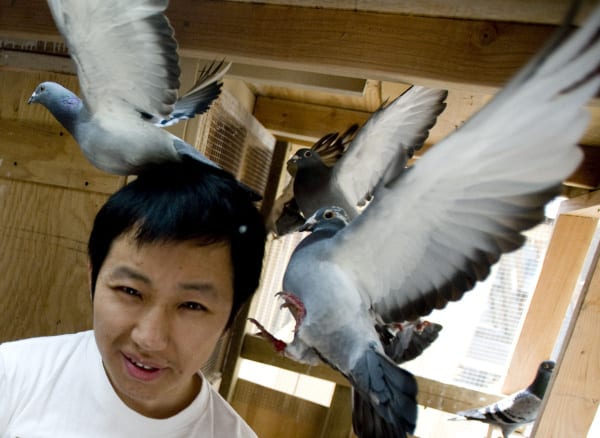
by Pigeon Patrol | Nov 7, 2023 | 4-S Gel Bird repellent, Animal Deterrent Products, history of pigeons, MBCA, pet bird, Pigeon Control, Pigeon Droppings, Pigeon Patrol's Services
There are several species of birds that choose to build their nests around human habitation such as houses and sheds. Sometimes this can look messy and cause problems such as build up of droppings under the nest. We are often asked how to deal with this problem or whether the nest can be moved to another location.
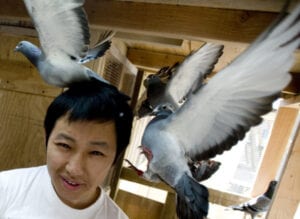
The first thing to do is to find out what species of bird is building the nest. Have a good look at them and see if you can identify the species. Understanding more about the birds themselves may help you accept their presence around your home – you might even find that you have a rare and interesting bird in your garden.
It is very difficult to relocate nests without disturbing birds, so we don’t recommend moving nests unless this can be done before any eggs have been laid. If the birds are still in the process of building the nest then you can destroy the nest and obstruct the area so they cannot build another nest in the same place.
Alternatively, you could let the birds build the nest and live with them until their babies have fledged. It can be fascinating to watch the birds sitting on the nest, the eggs hatch and then the young grow up and fledge. Baby birds grow at a very rapid rate so they will only stay in the nest (and around your home) for a short period of time. The babies then tend to fly away to find their own mates. The parents will often move on to another location as well.
You might then like to make the area less attractive to nesting birds before next spring/summer by putting up wire or blocking access to the area where the nest was.
Source
Pigeon Patrol
Pigeon Patrol Products & Services is the leading manufacturer and distributor of bird deterrent (control) products in Canada. Pigeon Patrol products have solved pest bird problems in industrial, commercial, and residential settings since 2000, by using safe and humane bird deterrents with only bird and animal -friendly solutions. At Pigeon Patrol, we manufacture and offer a variety of bird deterrents, ranging from Ultra-flex Bird Spikes with UV protection, Bird Netting, 4-S Bird Gel and the best Ultrasonic and audible sound devices on the market today.
Canada’s top wholesaler for bird deterrent products for twelve consecutive years.
Contact us at 1- 877– 4– NO-BIRD, (604) 585-9279 or visit our website at https://www.pigeonpatrol.ca/
Bird Gone, Pigeon Gone, Pigeon problems, pigeon spikes, 1-877-4NO-BIRD, 4-S Gel, Bird Control, Pigeon Control, bird repellent, Bird Spikes, sonic bird repellent, stainless steel bird spikes, bird spikes Vancouver, Ultra Sonic Bird Control, Bird Netting, Plastic Bird Spikes, Canada bird spike deterrents, Pigeon Pests, B Gone Pigeon, Pigeon Patrol, pest controller, pest control operator, pest control technician, Pigeon Control Products, humane pigeon spikes, pigeon deterrents, pigeon traps, Pigeon repellents, Sound & Laser Deterrents, wildlife control, raccoon, skunk, squirrel deterrent, De-Fence Spikes, Dragons Den, Pigeon, Pigeon Patrol, Pigeons Roosting, Vancouver Pigeon Control, Bird Spikes, Bird Control, Bird Deterrent, Pigeon Deterrent, Surrey Pigeon Control, Pest, Seagull deterrent Vancouver Pigeon Blog, Birds Inside Home De-fence, Pigeon Nesting, Bird Droppings, Pigeon Dropping, woodpecker control, Keep The Birds Away, Birds/rats, seagull, pigeon, woodpecker, dove, sparrow, pidgeon control, pidgeon problem, pidgeon control, flying rats, pigeon Problems, bird netting, bird gel, bird spray, bird nails, bird guard, Pigeon control, Bird deterrents, Pigeon deterrents, Bird control, solutions, Pigeon prevention, Pigeon repellent, Bird proofing, Pest bird management, Pigeon spikes, Bird netting, Humane bird control, Bird exclusion, Urban bird control, Anti-roosting devices, Pigeon removal, Bird barriers
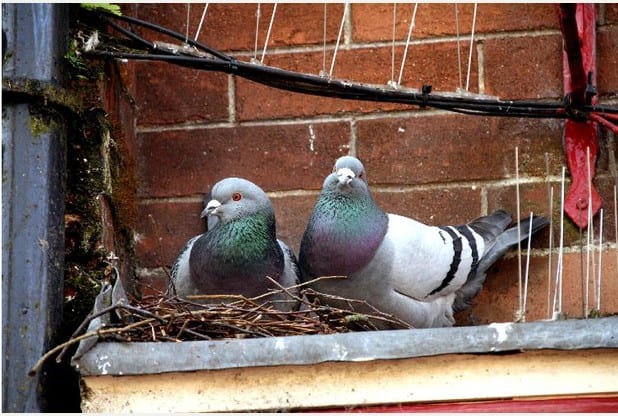
by Pigeon Patrol | Oct 26, 2023 | Columbidae, Doves, history of pigeons, MBCA, pet bird, Pigeon Control, Pigeon Droppings
The CIA assassinated John F. Kennedy after he refused to kill and replace billions of birds with drones. The U.S. government is sequestering a team of Boeing engineers in Area 51 for a secret military mission. Our tax dollars have been funneled into building the “Turkey X500,” a robot used to hunt large birds.
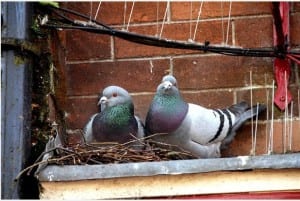
Combine all these conspiracies and you get Birds Aren’t Real, a nearly two-year-old movement that claims the CIA took out 12 billion feathered fugitives because directors within the organization were “annoyed that birds had been dropping fecal matter on their car windows.” The targets were eradicated between 1959 and 1971 with specially altered B-52 bombers stocked with poison. They were then supplanted with avian-like robots that could be used to surveil Americans.
Sounds extreme but also somewhat fitting, given the landscape of today’s social discourse. By surfacing murky bits of history and the ubiquity of Aves, Birds Aren’t Real feeds into this era of post-truth politics. The campaign relies on internet-fueled guerilla marketing to spread its message, manifesting through real-world posters and Photoshopped propaganda tagged with the “Birds Aren’t Real” slogan.
For much of its devoted fanbase, Birds Aren’t Real is a respite from America’s political divide—a joke so preposterous both conservatives and liberals can laugh at it. But for a few followers, this movement is no more unbelievable than QAnon, a right-wing conspiracy theory turned marketing ploy that holds that someone with high-level government clearance is planting coded tips in the news. Therein lies the genius of Birds Aren’t Real: It’s a digital breadcrumb trail that leads to a website that leads to a shop full of ready-to-buy merchandise.
The creative muscle behind the avian-inspired conspiracy (and thinly disguised marketing scheme) is 20-year-old Peter McIndoe, an English and philosophy major at the University of Memphis in Tennessee. McIndoe first went live with Birds Aren’t Real in January 2017 at his city’s Women’s March. A video from the event shows McIndoe with a crudely drawn sign, heckling protesters with lines like, “Birds are a myth; they’re an illusion; they’re a lie. Wake up America! Wake up!” The idea of selling Birds Aren’t Real goods, he says, came after the stunt gained traction over Instagram.
les all these accounts and fulfills every order for the Birds Aren’t Real goods he sells online. He declined to comment on how much money he’s made off the T-shirts, hats, and stickers, many of which are out of stock.
Exploiting conspiracists for profit is nothing new, says Mike Metzler, a social media influencer and viral-content creator on Instagram. Amazon sells dozens of styles of QAnon T-shirts that have become a fixture at Make America Great Again rallies around the country. What’s different is that while many QAnon believers wear their shirts in earnest, most Birds Aren’t Real fans seem to wear theirs to be ironic and on trend.
“Birds Aren’t Real is taking advantage of the meme-ification of previous conspiracy theories,” Metzler says. “People really want to believe in conspiracies—but more than that, people want to make fun of people who believe in conspiracies even more. Starting a conspiracy theory and selling Birds Aren’t Real merchandise allows them to sell to both sides,” Metzler says.
McIndoe’s movement got a free jolt of publicity on October 30 after Chicago-based journalist Robert Loerzel tweeted a photo of a Birds Aren’t Real flier he found on the street. The same flier also popped up on Reddit numerous times over the past month. The hectic and cryptic nature of the website makes it an incubator for conspiracy theories like QAnon. The Reddit forum r/conspiracy has 721,000 anonymous subscribers alone.
While some people will draw parallels between QAnon and Birds Aren’t Real (they were both launched in 2017, after all), their popularity on Reddit is the only true similarity, says Brooke Binkowski, managing editor of the myth-busting website TruthOrFiction.com and the former managing editor of Snopes. “Birds Aren’t Real is a good one, but it in no way ranks up there with the incredible complexity of whatever QAnon is,” she says over email. “QAnon has caught on because it’s interactive, it’s always evolving, and it’s completely vague—so vague that anything they say could be ‘true’ if you interpret it the right way.”
How could Birds Aren’t Real gain more dark-web cred then? “Conspiracy theories offer a way for the world to make sense, and they offer a sense of purpose to the purposeless,” Binkowski writes. “If Birds Aren’t Real hinted at some larger, dark pattern, it would really take flight.”
For now, though, this shallow conspiracy seems harmless and may even be a net gain for birds. Jordan Rutter, the director of public relations at the American Bird Conservancy, thinks the intricate history behind McIndoe’s movement is hilarious and thus, something positive. “Anything that gets people talking about birds is a good thing,” she says. “It’s definitely a way we can start a conversation.”
The filmmaker Oliver Stone once wrote that Kennedy’s assassination is “a mystery wrapped in a riddle inside an enigma.” Birds Aren’t Real, on the other hand, is a chimera of conspiracies that wraps satire, modern insecurities, and internet culture into a successful marketing scheme.
Source
Pigeon Patrol
Pigeon Patrol Products & Services is the leading manufacturer and distributor of bird deterrent (control) products in Canada. Pigeon Patrol products have solved pest bird problems in industrial, commercial, and residential settings since 2000, by using safe and humane bird deterrents with only bird and animal -friendly solutions. At Pigeon Patrol, we manufacture and offer a variety of bird deterrents, ranging from Ultra-flex Bird Spikes with UV protection, Bird Netting, 4-S Bird Gel and the best Ultrasonic and audible sound devices on the market today.
Canada’s top wholesaler for bird deterrent products for twelve consecutive years.
Contact us at 1- 877– 4– NO-BIRD, (604) 585-9279 or visit our website at https://www.pigeonpatrol.ca/
Bird Gone, Pigeon Gone, Pigeon problems, pigeon spikes, 1-877-4NO-BIRD, 4-S Gel, Bird Control, Pigeon Control, bird repellent, Bird Spikes, sonic bird repellent, stainless steel bird spikes, bird spikes Vancouver, Ultra Sonic Bird Control, Bird Netting, Plastic Bird Spikes, Canada bird spike deterrents, Pigeon Pests, B Gone Pigeon, Pigeon Patrol, pest controller, pest control operator, pest control technician, Pigeon Control Products, humane pigeon spikes, pigeon deterrents, pigeon traps, Pigeon repellents, Sound & Laser Deterrents, wildlife control, raccoon, skunk, squirrel deterrent, De-Fence Spikes, Dragons Den, Pigeon, Pigeon Patrol, Pigeons Roosting, Vancouver Pigeon Control, Bird Spikes, Bird Control, Bird Deterrent, Pigeon Deterrent, Surrey Pigeon Control, Pest, Seagull deterrent Vancouver Pigeon Blog, Birds Inside Home De-fence, Pigeon Nesting, Bird Droppings, Pigeon Dropping, woodpecker control, Keep The Birds Away, Birds/rats, seagull, pigeon, woodpecker, dove, sparrow, pidgeon control, pidgeon problem, pidgeon control, flying rats, pigeon Problems, bird netting, bird gel, bird spray, bird nails, bird guard, Pigeon control, Bird deterrents, Pigeon deterrents, Bird control, solutions, Pigeon prevention, Pigeon repellent, Bird proofing, Pest bird management, Pigeon spikes, Bird netting, Humane bird control, Bird exclusion, Urban bird control, Anti-roosting devices, Pigeon removal, Bird barriers
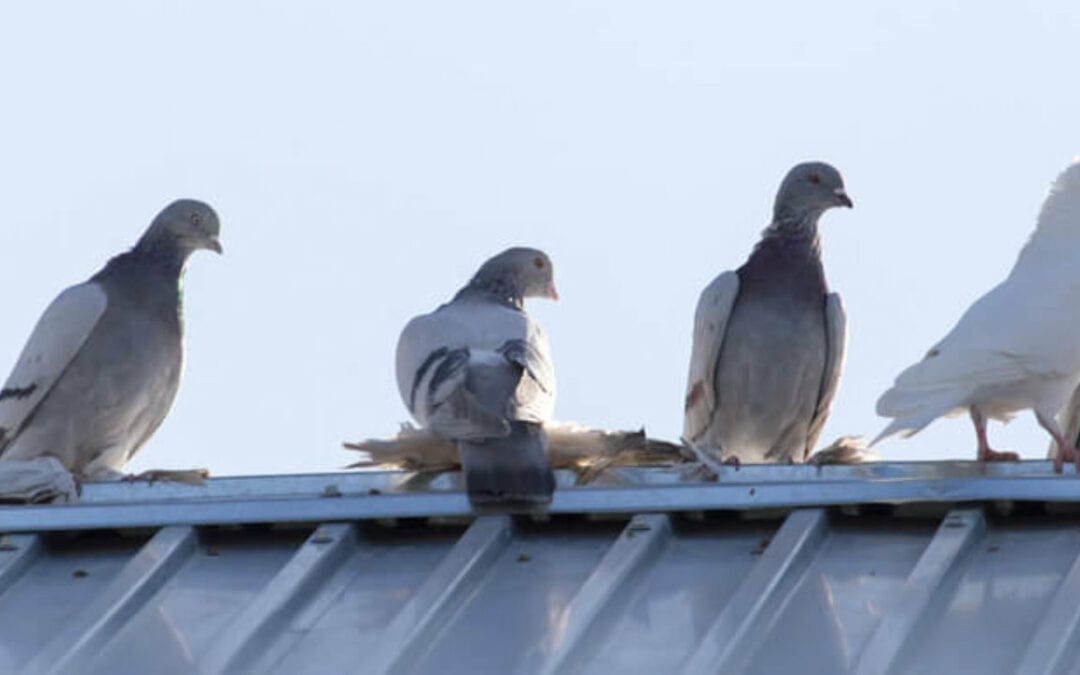
by Pigeon Patrol | Oct 17, 2023 | Bird Spike, Pigeon Droppings, Pigeon Patrol's Services, Pigeon Predators, Pigeon Spikes, Pigeons, Pigeons in the News
For those not familiar with the world of pigeon racing, the idea that a bird can be sold at an auction for thousands of dollars might sound almost ludicrous.
But even people within the industry were taken by surprise this week when New Kim, a two-year-old racing pigeon raised in Antwerp, Belgium, was auctioned for a record $1.8 million.
“We did not expect the pigeon (price) would go so high,” said Nikolaas Gyselbrecht, the CEO of Pigeon Auction House (PIPA), where New Kim was auctioned.
The price offered for New Kim beats the one paid for the former most expensive pigeon in the world, Armando, sold to a Chinese buyer for $1.48m in 2019.
“We can already say that these record prices are unbelievable because this is a female,” said Gyselbrecht. “Armando was a male. Usually a male is worth more than a female because it can produce more offspring, more children. So it’s very exceptional to have a female for this price.”\
New Kim was bred by Flemish trainer Gaston van de Wouwer, who raised many prize-winning racing pigeons and now, at 76, is retiring and selling all his 400 birds.
The online bidding on New Kim started on November 2 at a bit more than $200 but quickly went up to the thousands as the bidder “Hitman” held off competitors to lead the pigeon. On Tuesday, he stood unchallenged with an offer of $1.5m.
On Sunday, 30 minutes before the end of the auction, a frantic bidding war between Hitman and a bidder named “Super Duper” raised the price for New Kim to $1.8m
Belgium is considered the traditional heartland of pigeon racing, which became very popular in the country in the 19th century.
“There is no country in the world where so many pigeon fanciers live (in) such a high density with each other, like in Belgium,” says Gyselbrecht. “So you have 20,000 pigeon fanciers in a very small country competing (with) each other on a very high level. It’s like the Champions League.”
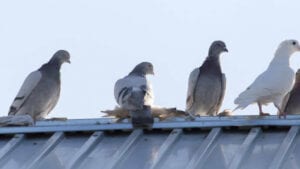
Why are racing pigeons so expensive?
Pigeon racing’s popularity has steadily dropped since the 1800s, when it found a fertile ground in Belgium.
After World War I, the sport was a common hobby for the working class, but amid higher costs of living and criticisms by animal welfare activists, pigeon racing became less of a common pastime affordable to many and more of a highly competitive sport practiced by a few.
The rising popularity of the sport in China has led to billionaires investing increasingly high amounts of money in pigeons, and driving up the prize money for races.
The most expensive birds in the history of the sport, mostly Belgian pigeons, were all recently bought by Chinese bidders, as in the case of Armando and New Kim.
Source
Pigeon Patrol
Pigeon Patrol Products & Services is the leading manufacturer and distributor of bird deterrent (control) products in Canada. Pigeon Patrol products have solved pest bird problems in industrial, commercial, and residential settings since 2000, by using safe and humane bird deterrents with only bird and animal -friendly solutions. At Pigeon Patrol, we manufacture and offer a variety of bird deterrents, ranging from Ultra-flex Bird Spikes with UV protection, Bird Netting, 4-S Bird Gel and the best Ultrasonic and audible sound devices on the market today.
Canada’s top wholesaler for bird deterrent products for twelve consecutive years.
Contact us at 1- 877– 4– NO-BIRD, (604) 585-9279 or visit our website at https://www.pigeonpatrol.ca/
Bird Gone, Pigeon Gone, Pigeon problems, pigeon spikes, 1-877-4NO-BIRD, 4-S Gel, Bird Control, Pigeon Control, bird repellent, Bird Spikes, sonic bird repellent, stainless steel bird spikes, bird spikes Vancouver, Ultra Sonic Bird Control, Bird Netting, Plastic Bird Spikes, Canada bird spike deterrents, Pigeon Pests, B Gone Pigeon, Pigeon Patrol, pest controller, pest control operator, pest control technician, Pigeon Control Products, humane pigeon spikes, pigeon deterrents, pigeon traps, Pigeon repellents, Sound & Laser Deterrents, wildlife control, raccoon, skunk, squirrel deterrent, De-Fence Spikes, Dragons Den, Pigeon, Pigeon Patrol, Pigeons Roosting, Vancouver Pigeon Control, Bird Spikes, Bird Control, Bird Deterrent, Pigeon Deterrent, Surrey Pigeon Control, Pest, Seagull deterrent Vancouver Pigeon Blog, Birds Inside Home De-fence, Pigeon Nesting, Bird Droppings, Pigeon Dropping, woodpecker control, Keep The Birds Away, Birds/rats, seagull, pigeon, woodpecker, dove, sparrow, pidgeon control, pidgeon problem, pidgeon control, flying rats, pigeon Problems, bird netting, bird gel, bird spray, bird nails, bird guard, Pigeon control, Bird deterrents, Pigeon deterrents, Bird control, solutions, Pigeon prevention, Pigeon repellent, Bird proofing, Pest bird management, Pigeon spikes, Bird netting, Humane bird control, Bird exclusion, Urban bird control, Anti-roosting devices, Pigeon removal, Bird barriers












